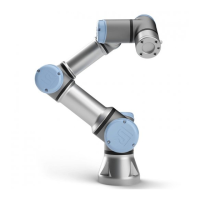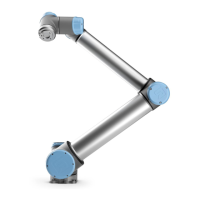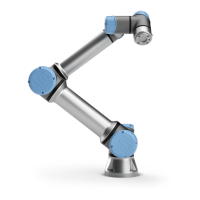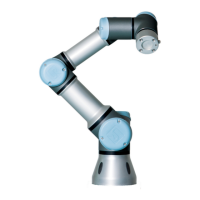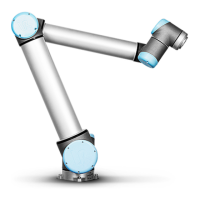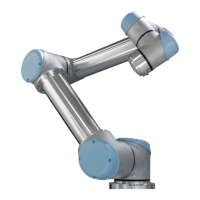boundary limit is visualized with a spherical cone together with a vector indicating the current
orientation of the robot tool. The inside of the cone represents the allowed area for the tool
orientation (vector).
When the robot TCP is no longer in proximity of the limit, the 3D representation disappears. If the
TCP is in violation or very close to violating a boundary limit, the visualization of the limit turns red.
25.2.1. Feature
Under Feature, you can define how to control the robot arm relative to View, Base or Tool features.
For the best feel for controlling the robot arm you can select the View feature, then use Rotate
arrows to change the viewing angle of the 3D image to match your view of the real robot arm.
25.2.2. Active TCP
In the Robot field, under Active TCP, the name of the current active Tool Center Point (TCP) is
displayed.
25.2.3. Home
The Home button accesses the Move Robot into Position screen, where you can hold down the
Auto button (see 22.4.2. Move robot to:on page141) to move robot into position previously
defined under Installation (see 24.13.1. Defining Homeon page219). The Home button’s default
setting returns the Robo Arm to an upright position (see 24.13. Homeon page219).
25.2.4. Freedrive
The on-screen Freedrive button allows the Robot Arm to be pulled into desired positions/poses.
25.2.5. Align
The Align button allows the Z axis of the active TCP to align to a selected feature.
25.3. Tool Position
The text boxes display the full coordinate values of the TCP relative to the selected feature. You
can configure several named TCPs (see24.2. TCP Configurationon page205). You can also tap
Edit pose to access the Pose Editor screen.
25.4. Joint Position
The Joint Position field allows you to directly control individual joints. Each joint moves along a
default joint limit range from − 360
∘
to + 360
∘
, defined by a horizontal bar. Once the limit is
reached you cannot move a joint any further. You can configure joints with a position range
different from the default (see 21.10. Joint Limitson page124), this new range is indicated with
red zone inside the horizontal bar.
UR5e 240 User Manual
25.Move Tab
Copyright © 2009–2021 by UniversalRobotsA/S. All rights reserved.
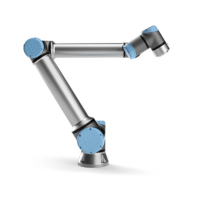
